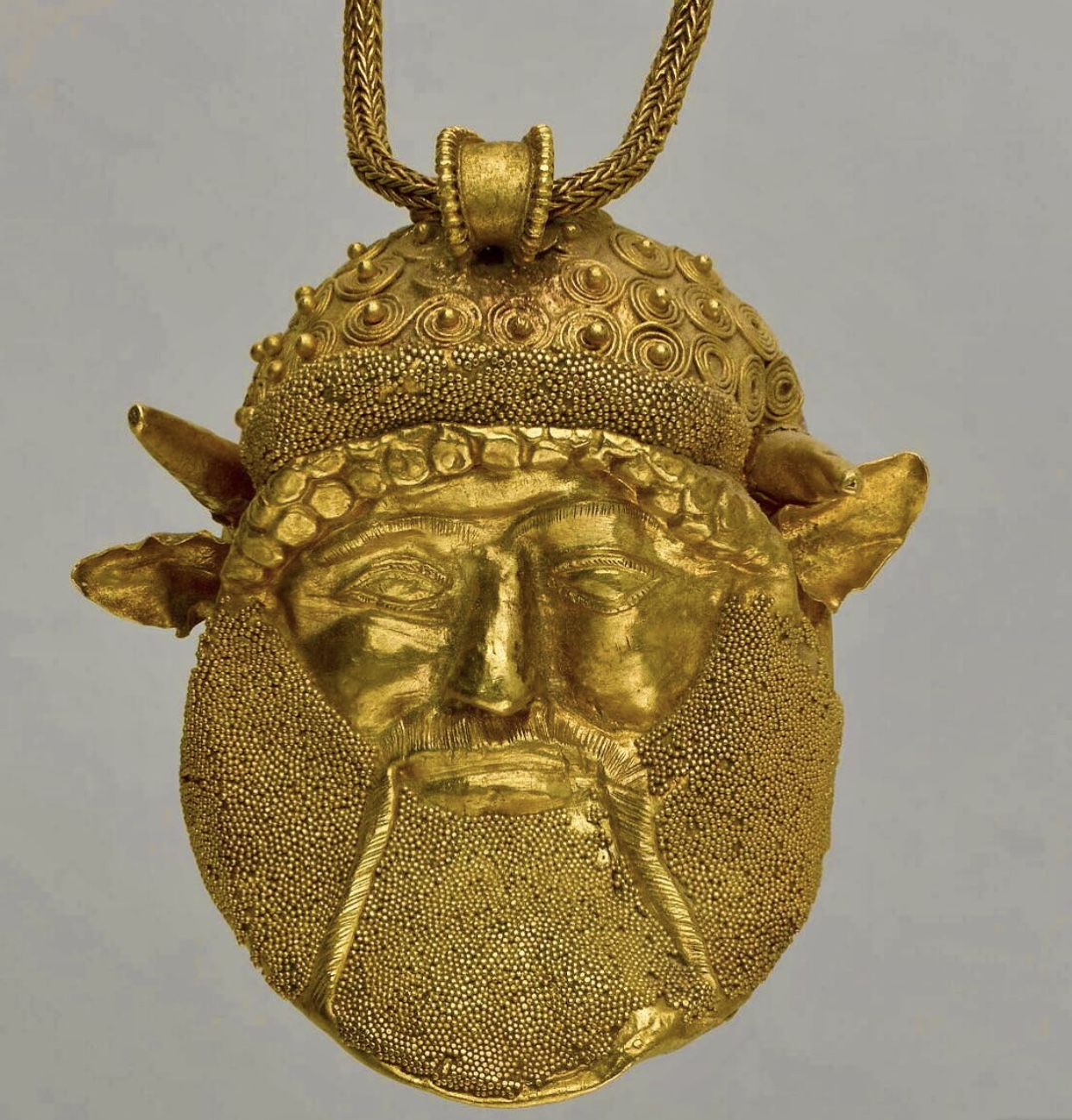When this little beauty caught my eye (as many shiny things do) in a showcase full of Etruscan gold, I did a double take. The head is only about 2 centimeters tall, representing the wild and woolly grand-daddy of all river gods Achelaos, known for his bushy beard, horned head, and bull’s body. A distinctive combination, and he is shown to great effect frontally in Greek and Etruscan representations such as this one.
The really superlative aspect here is not the head’s mythological connotations (although wearing such a visage must have been a thrill) but rather the way the goldsmith has encrusted his beard and hair with the tiniest granulation I’ve ever seen, the granules so impossibly small and closely packed that if not for a glint of light reflecting off them and a few losses, I would have passed right by it.

Granulation – decoration with those tiny spheres – is a technique perfected by the Etruscans in the 6th century B.C. although it had been used in the Near East and Mediterranean long before. Although their method is still somewhat mysterious, it seems as though they clipped small snips of gold wire onto a charcoal surface and heated them just until the gold balled up into these practically perfect balls. Then (without the use of modern magnification, and presumably with a lot of eye strain), placed them precisely on the surface to be adorned, binding them there with a transient glue-like agent and further heating.
I would love to hear a modern jeweler’s take on this (please correct me if I have it wrong) as it boggles the mind!




